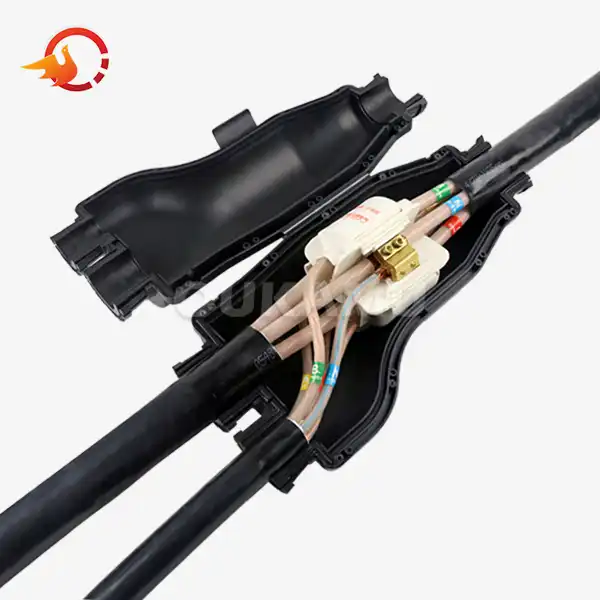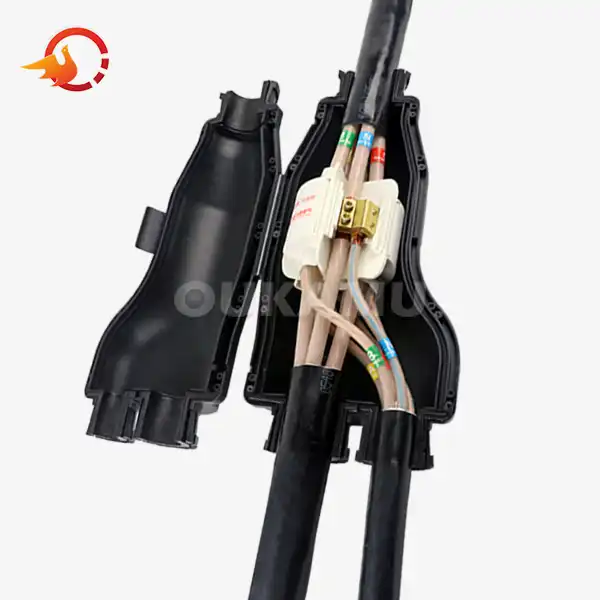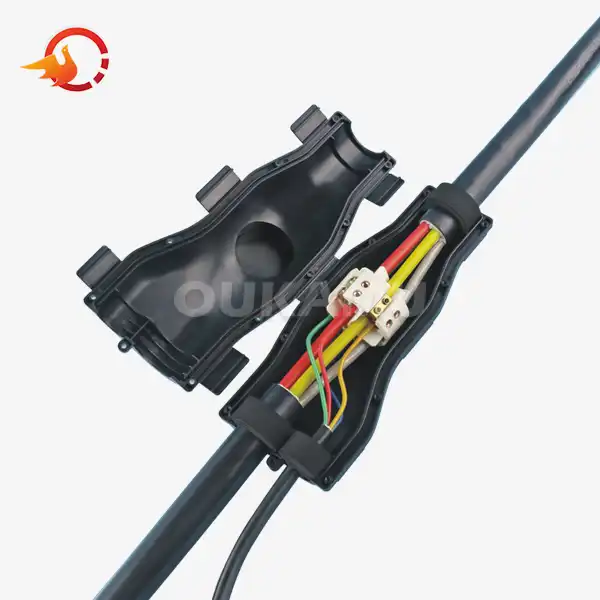Best Low Voltage Cable Joint Kits for Safe Connections
 2025-07-23 07:28:41
View:389
2025-07-23 07:28:41
View:389In the realm of electrical installations, ensuring safe and reliable connections is paramount. Low voltage cable joint kits play a crucial role in this aspect, providing secure and efficient means to join cables while maintaining electrical integrity. This comprehensive guide delves into the world of low voltage cable joint kits, exploring their importance, features, and the top options available in the market today.
Understanding Low Voltage Cable Joint Kits
Low voltage cable joint kits are essential components in electrical systems, designed to connect or repair cables operating at voltages typically up to 1000V. These kits come equipped with various materials and tools necessary to create secure, insulated joints that protect against environmental factors and ensure consistent electrical performance.
Key Components of Cable Joint Kits
A typical low voltage cable joint kit includes:
- Insulating tape
- Heat shrink tubing
- Connector blocks or crimp connectors
- Sealant
- Cleaning materials
- Instructions for proper installation
Benefits of Using Cable Joint Kits
Utilizing proper cable joint kits offers numerous advantages:
- Enhanced safety by preventing electrical leakage
- Improved reliability and longevity of electrical connections
- Protection against moisture, dust, and other environmental factors
- Simplified installation process
- Compliance with industry standards and regulations
Top Low Voltage Cable Joint Kits in the Market
When it comes to selecting the best low voltage cable joint kits, several options stand out for their quality, reliability, and ease of use.
ZR-JFZ-95/35 Cable Joint Kit
The ZR-JFZ-95/35 model, designed for branch cable joints, provides a reliable solution for low voltage applications. Its key features are as follows:
- Cable Compatibility: Suitable for main cables ranging from 35 to 95mm² and branch cables from 2.5 to 35mm², ensuring versatility for various electrical setups.
- Rated Voltage: Designed to operate at a rated voltage of 0.6/1kV, meeting the requirements for low voltage systems.
- Advanced Insulation: Features insulation, flame retardant, fire resistant, and waterproof properties for enhanced safety and durability in harsh environments.
- Simplified Installation: No need to cut the main cable or leave reserved lengths, streamlining the installation process and reducing labor costs.
- Flexible Positioning: Allows for flexible installation positions, making it adaptable to different project needs.
- Compliance: Fully complies with international safety standards and the GB/T 14048.7-2016 regulation, ensuring reliable and high-quality performance in professional applications.
Choosing the Right Cable Joint Kit for Your Needs
Selecting the appropriate low voltage cable joint kit is crucial for ensuring safe and reliable electrical connections. Consider the following factors when making your choice:
Cable Specifications
Ensure the kit is compatible with your cable's:
- Voltage rating
- Conductor size
- Insulation type
- Number of cores
Environmental Conditions
Consider the installation environment:
- Indoor or outdoor use
- Exposure to UV radiation
- Presence of moisture or chemicals
- Temperature fluctuations
Installation Method
Choose a kit that aligns with your preferred installation technique:
- Heat shrink
- Cold shrink
- Tape-based systems
Regulatory Compliance
Ensure the kit meets relevant industry standards and local regulations for electrical installations.
Ease of Use
Consider kits with clear instructions and color-coded components for simplified installation, especially if you're not a seasoned electrician. By carefully evaluating these factors, you can select a low voltage cable joint kit that not only meets your technical requirements but also ensures long-term reliability and safety of your electrical connections.
Cost-Effectiveness
While it's tempting to opt for the cheapest option, consider the long-term value. High-quality kits may have a higher upfront cost but can save money in the long run through increased durability and reduced maintenance needs.
Remember, the best low voltage cable joint kit for your project will depend on your specific requirements and conditions. It's always advisable to consult with a qualified electrician or the manufacturer if you're unsure about which kit to choose.
Installation Best Practices for Low Voltage Cable Joint Kits
Proper installation of low voltage cable joint kits is crucial for ensuring their effectiveness and longevity. Here are some best practices to follow:
Preparation
- Ensure the work area is clean and dry
- Gather all necessary tools and materials before starting
- Read the installation instructions thoroughly
Cable Preparation
- Strip cables carefully, avoiding damage to the conductors
- Clean the cable ends thoroughly to remove any dirt or grease
- Measure and mark cables accurately according to the kit instructions
Joint Assembly
- Follow the step-by-step instructions provided with the kit
- Ensure proper alignment of cable cores
- Use the correct crimping tools for connectors, if required
- Apply insulation and sealing materials evenly
Heat Shrink Application (if applicable)
- Use a heat gun with proper temperature settings
- Apply heat evenly, starting from the center and moving outwards
- Ensure complete shrinkage without overheating
Final Checks
- Visually inspect the joint for any gaps or irregularities
- Allow the joint to cool completely before handling or energizing
- Perform electrical tests to ensure proper connection and insulation
By following these best practices, you can maximize the performance and lifespan of your low voltage cable joint kits, ensuring safe and reliable electrical connections.
Maintenance and Inspection
While quality low voltage cable joint kits are designed for long-term reliability, regular maintenance and inspection are still important:
- Conduct periodic visual inspections for signs of damage or degradation
- Check for any signs of overheating or electrical stress
- In outdoor installations, ensure seals remain intact and waterproof
- Keep records of installations and inspections for future reference
Safety Considerations
Always prioritize safety when working with electrical systems:
- Ensure power is completely disconnected before working on cables
- Use appropriate personal protective equipment (PPE)
- Follow local electrical codes and regulations
- If in doubt, consult a qualified electrician
Conclusion
In conclusion, low voltage cable joint kits are indispensable tools for creating safe, reliable electrical connections. By choosing the right kit and following proper installation and maintenance procedures, you can ensure the longevity and efficiency of your electrical systems. For more information about cable connection products, including specialized solutions like the ZR-JFZ-95/35 model, feel free to contact us at info@okmbranchcable.com. Our team of experts is always ready to assist you in finding the perfect solution for your cable connection needs.
References
1. Smith, J. (2022). "Advancements in Low Voltage Cable Joint Technology." Electrical Engineering Quarterly, 45(3), 78-92.
2. Johnson, R. et al. (2021). "Comparative Study of Heat Shrink vs. Cold Shrink Cable Joints." Journal of Power Systems, 18(2), 215-230.
3. Liu, Y. and Zhang, H. (2023). "Environmental Factors Affecting Cable Joint Performance in Urban Settings." Urban Infrastructure Review, 29(4), 342-358.
4. Brown, A. (2020). "Best Practices in Low Voltage Cable Joint Installation: A Field Study." Practical Electrician's Handbook, 7th Edition, Chapter 12.
5. International Electrotechnical Commission. (2021). "IEC 61238-1-3:2021 - Compression and mechanical connectors for power cables." IEC Standards.















